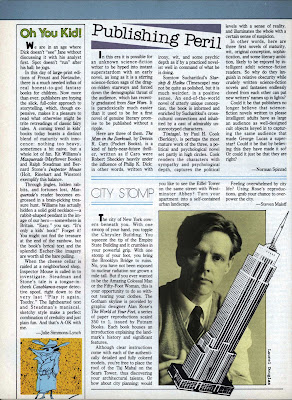Book Review: 'Science Fiction: What It's All About', by Sam J. Lundwall
3 / 5 Stars
Sam J. Lundwall (b. 1941) is one of Sweden’s most influential SF fans, authors, editors, and publishers. His novels ‘Bernhard the Conqueror’ (1973) and ‘2018 AD, or the King Kong Blues’ (1975) were published in the US by DAW Books.
Lundwall published ‘Science Fiction: What It’s All About’ in Sweden in 1969. Having met Lundwall during a world SF convention in London, Donald A. Wolheim, then the editor of Ace Books, offered to publish the book in the US (Lundwall is fluent in English).
‘SF:WIAA’ (256 pp., black and white illustrations) was released in 1971, with cover art by Dean Ellis.
As Wolheim points out in his Introduction, SF has primarily been viewed as a manifestation of American popular culture, with the genre’s standing in non-American countries being something of an afterthought among fans and publishers.
Thus, Lundwall’s overview of the genre provides a useful ‘Eurocentric’ perspective; more so when one considers that in the early 70s, there was no Internet or World Wide Web, and cross-cultural communications more laborious and cumbersome than today.
‘SF:WIAA’ is divided into chapters dealing with the early history of SF; early Utopian ideals in the genre; contemporary SF and its rather pessimistic view of the world; and the advent of fantasy / sword and sorcery literature as a cultural phenomenon.
Successive chapters focus on traditional SF, and major writers such as Asimov and Heinlein; the field’s treatment of robots, women, and aliens; mass culture approaches to SF, such as comic books, television, and feature films; and SF fandom. The final chapter predicts where the genre would be headed as the 70s unfolded.
It goes without saying that SF:WIAA is outdated, as such books inevitably become within a few years of their release. Not surprisingly, a book of this length can only skim certain aspects of the genre, and gaps in coverage exist. For example, Lundwall rarely acknowledges that SF is a business, and that marketing and profitability play salient roles in determining what is, or is not, published. As well, Lundwall rarely passes up opportunities to remind his Anglophone readers that (arguably) seminal works of SF were produced in Scandinavia and Europe, an aspect of SF history that, in his opinion, has been given short shrift by the US component of SF fandom.
However, fans interested in a readable overview of the genre as the New Wave era became more prominent, and some degree of turmoil accompanied its advent, may find SF:WIAA worth a look. Lundwall himself is rather skeptical of the New Wave movement, seeing it as too fixated with the negative, but he also criticizes traditional SF for its conservatism and stodginess about social mores and attitudes (remember, in the late 60s – early 70s Sweden was the hallmark of a progressive country, what with its release of ‘explicit’ films such as ‘I Am Curious / Yellow’).
'SF: WIAA' stands as an interesting snapshot of the genre when it was on the cusp of growing into the massive cultural phenomenon of the later 70s.









































































